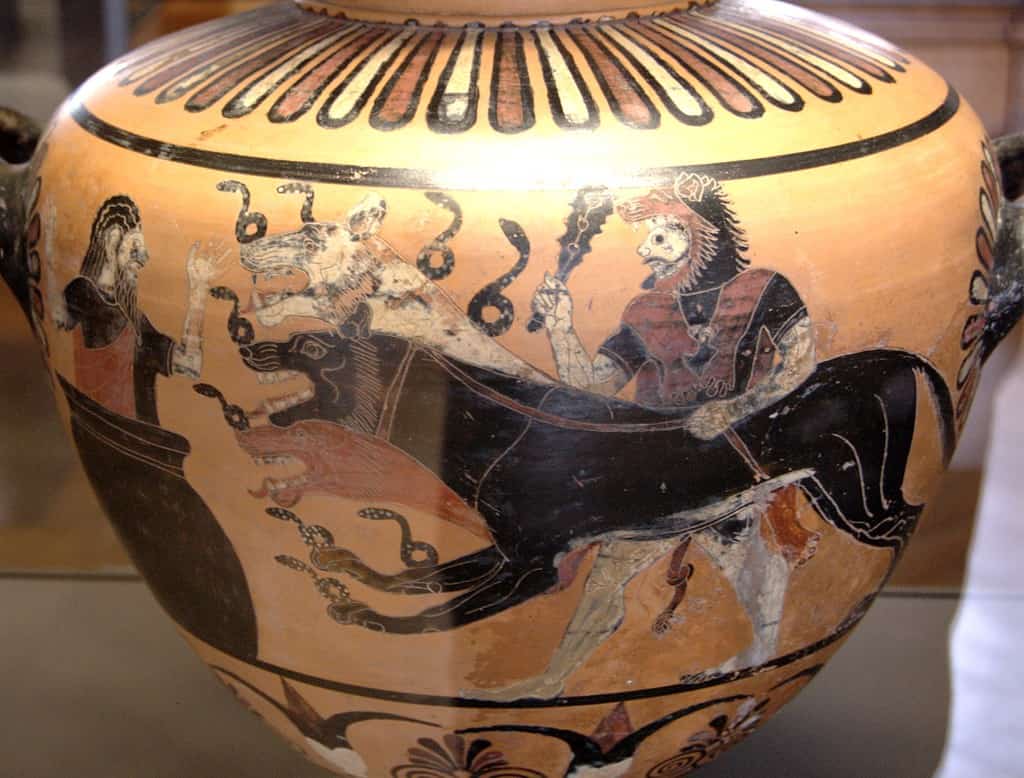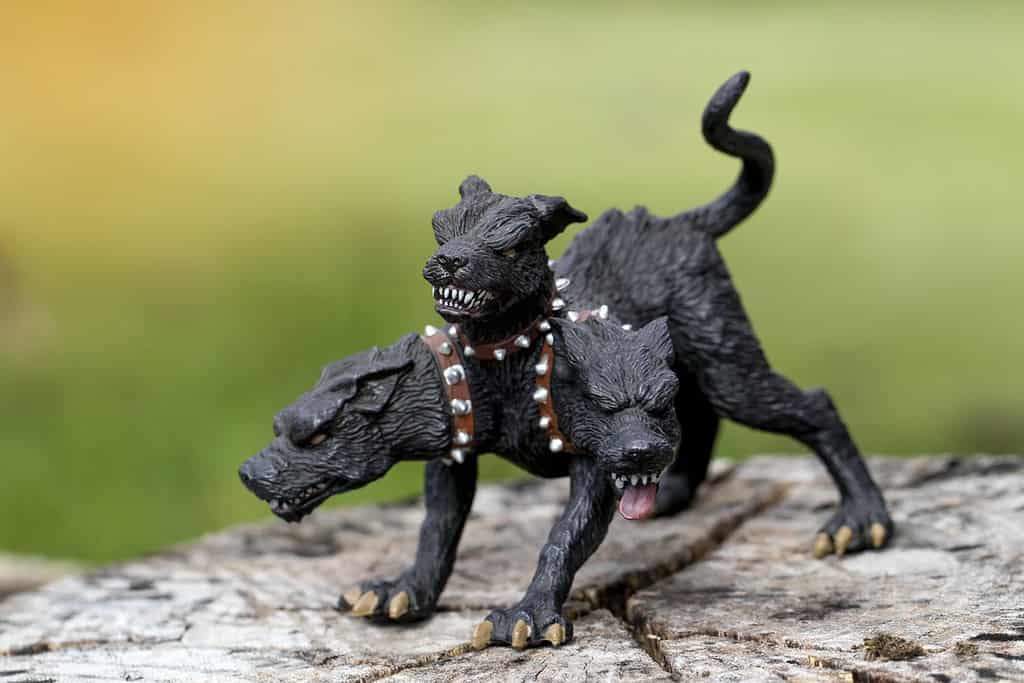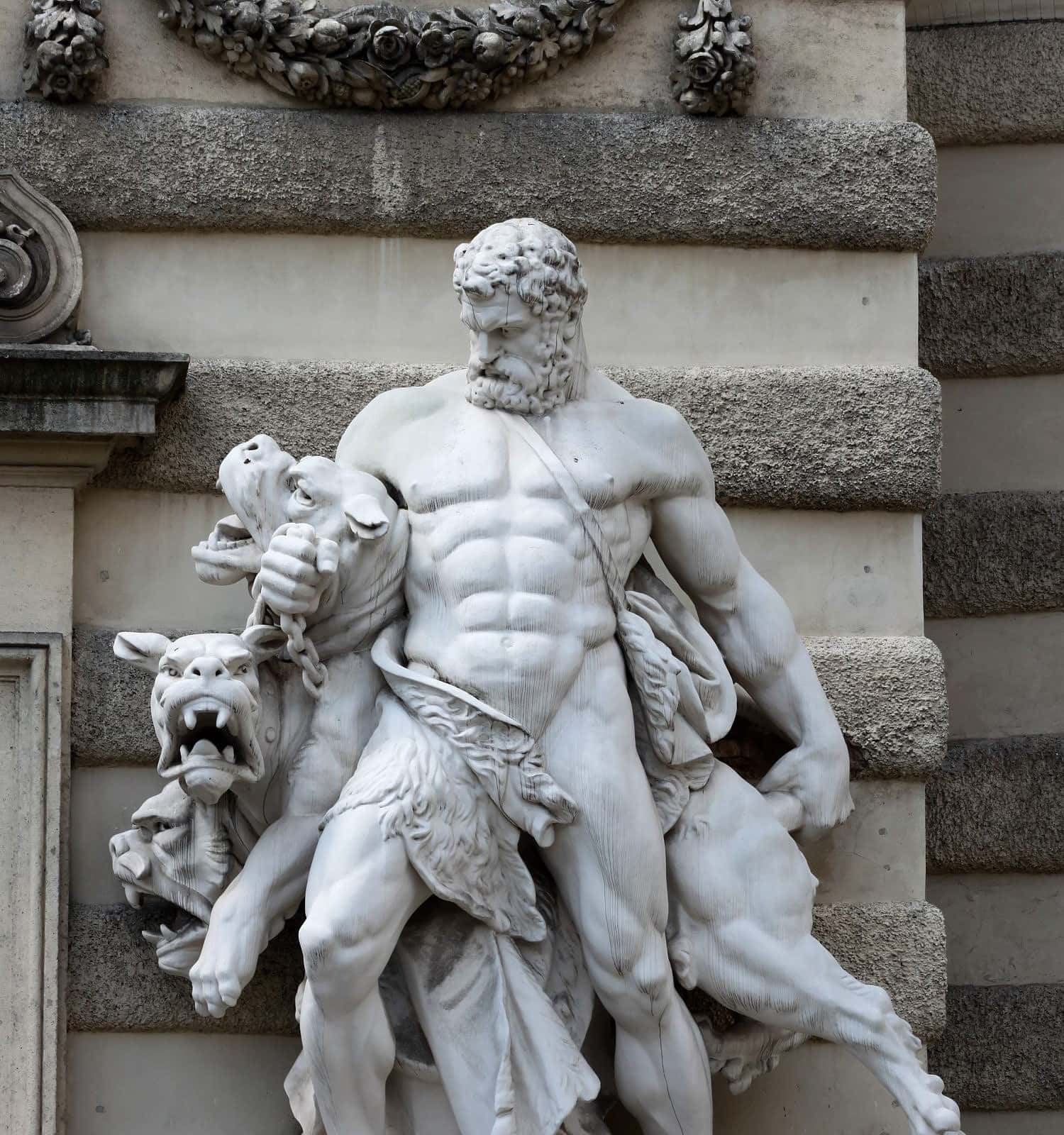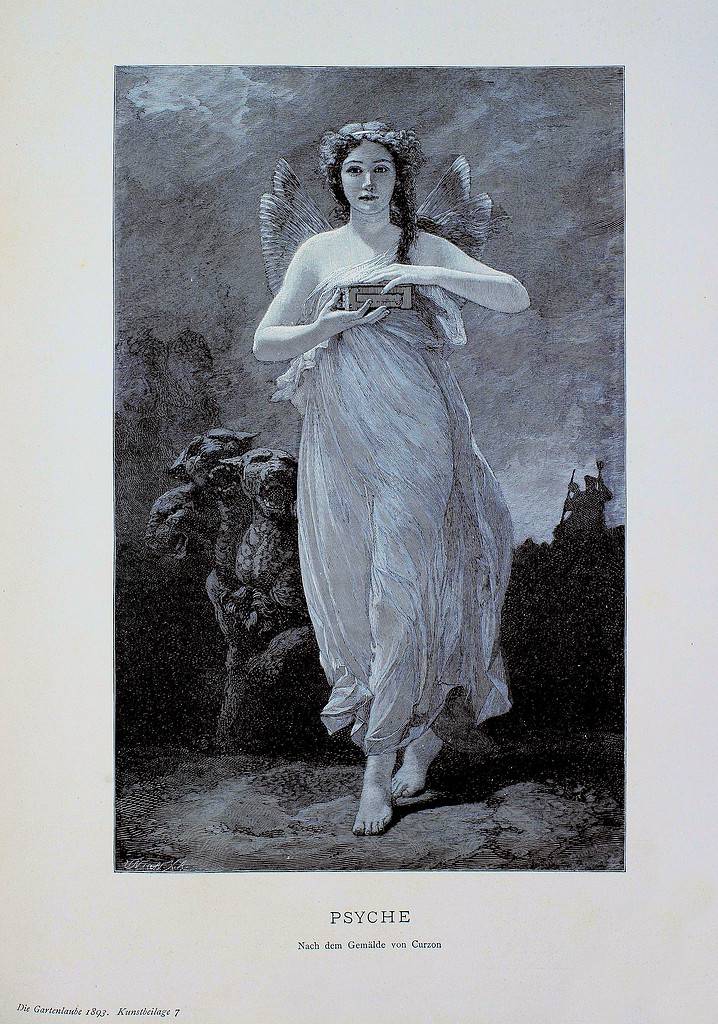In ancient times, the afterlife wasn’t a very happy place. Sure, when Greek heroes died, they were lucky enough to head on over to Elysium or the Isles of the Blessed. However, when ordinary mortals died, their souls were fated to spend eternity in the Underworld and Tartarus. Once a soul enters through the gate of the Underworld, there’s no going back thanks to Hades’ favorite furball, Cerberus. Let’s take a closer look at Cerberus, the monstrous Underworld guardian of Greek mythology!
Who Is Cerberus?

Many pieces of Greek pottery feature Cerberus in the Underworld.
©Louvre Museum / Public domain, via Wikimedia Commons – Original / License
Cerberus belongs to Hades, the ancient Greek god of the Underworld. Sometimes referred to as a “hellhound” or “Hound of Hades”, Cerberus (Κέρβερος) is a monstrous dog who guards the entrance to the Underworld. His job is to make sure that those still living cannot enter, and that those who are dead never leave.
Cerberus is extremely good at his job and no mortal can overpower the beast. On occasion, however, he has been known to get bored. In those cases, he sometimes pretends to sleep and lets a living mortal sneak past him. But once one of these foolish mortals has entered the Underworld, Cerberus refuses to let them go back to the land of the living. According to the ancient Greek poet and philosopher, Hesiod, Cerberus “keeps watch and devours whomsoever he catches going out of the gate of strong Hades and awful Persephone”.
Where Did Cerberus Originate?

Cerberus’ mother, Echidna, is sometimes called the “mother of monsters”.
©george photo cm/Shutterstock.com
According to Hesiod, Cerberus is the child of the giant Typhon and a half-woman, half-snake creature named Echidna. He also has a few other monstrous siblings, like Orthos (a two-headed dog), the Lernaean Hydra, and the Chimera.
What Does Cerberus Look Like?

In general, Cerberus is depicted as a monstrous three-headed dog.
©george photo cm/Shutterstock.com
Cerberus is an incredibly massive and monstrous dog with razor-sharp fangs and a thunderous growl. The earliest description of him comes from Hesiod, who said that he had 50 ferocious heads. Another Greek poet, Pindar, claimed that he had 100 heads, while the Roman poet Horace wrote that he had one head with three tongues ringed by 100 snakes. However, it was traditionally believed that Cerberus had one body with three different heads.
Cerberus also had a tail made of various serpents, as well as a row of snakeheads along his mane and back. The Greek poet Euphorion wrote that the beast could shoot fire from his eyes. Cerberus also had extraordinary hearing — which came in handy when it came to patrolling the borders of the Underworld.
Stories of Cerberus from the Ancient Greeks and Today
Cerberus and Heracles

The skin of the Nemean
lion
protected Heracles from Cerberus.
©Cromagnon/Shutterstock.com
Cerberus was so large and fearsome that no mortal could overpower him — which, of course, is why he made such a great guard dog. However, in one very rare instance, a demi-god lucked out and got the upper hand on the monstrous dog — the famous hero, Heracles.
After being driven mad and killing his children, Heracles was assigned 12 labors to complete to cleanse himself and atone. His twelfth and final labor was to go into the Underworld and bring Cerberus back to King Eurystheus of Tiryns. Of all the tasks he had been given, this one was by far the most challenging and definitely the most dangerous.
Guided by the messenger god Hermes and Athena, the goddess of strategic warfare and wisdom, Heracles entered the Underworld near the Black Sea. He went to Hades and Persephone and asked if he could borrow their demonic dog. Hades laughed and said that Heracles was free to take Cerberus — but only if he could overpower the beast without using any weapons.
Hades’ hellhound was so fierce and terrible, that not even the mighty hero Heracles likely would have lost the fight. Fortunately for the demi-god, however, the first of his twelve labors had been to kill the Nemean lion, a creature with impervious golden fur. After he slayed the lion, Heracles took his pelt and wore it for protection. So, when he faced Cerberus, he was able to subdue him without any weapons (and without injury). After Heracles took Cerberus to King Eurystheus, he promptly returned the guard dog back home.
However, while Cerberus was in the world of the living, he ended up drooling a bit (it’s bound to happen when you have three dog heads). When his saliva hit the earth, it sprouted into an aconite or wolfsbane plant. The sorceress Medea later used the plant for its poisonous properties.
Cerberus and Orpheus

Cerberus is a symbol of the Greek god, Hades.
©Zde / CC BY-SA 4.0, via Wikimedia Commons – Original / License
The divinely blessed poet and musician, Orpheus, was one of the few mortals to make it past Cerberus and live to tell the tale. Shortly after his marriage, Orpheus’ wife, the nymph Eurydice, tragically died from a snake bite. Wracked with grief, Orpheus descended into the Underworld in an attempt to get her back. He played his lyre for Cerberus and enchanted the monstrous dog with his beautiful music. This allowed Orpheus to sneak past and beg Hades to let Eurydice go. Although Hades agreed, there was a catch: Orpheus couldn’t look back at his wife until they were back in the world of the living. Unfortunately, Orpheus failed and lost Eurydice forever.
The Canine Monster Who Loves Honey Cakes

Although Psyche was a mortal, she eventually was given immortality.
©various / Public domain, via Wikimedia Commons – Original / License
In addition to snacking on escaped souls, the ancient Greeks believed that Cerberus only ate raw meat. However, it turns out that he also had a particular fondness for honey cakes.
When Eros fell in love with the beautiful Psyche, his mother — the goddess of love and beauty, Aphrodite — did not approve. She subjected the poor mortal girl to several challenges to prove her worthiness. One of the tasks was to descend into the Underworld and steal some of Persephone’s magical beauty cream. Psyche, however, was not only beautiful — was also quite smart. She brought some honey cakes with her to the Underworld, which distracted Hades’ guard dog long enough for her to get to Persephone.
Ultimately, Cerberus fell prey to his sweet tooth on more than one occasion. The Roman demi-god Aeneas used the same trick when he descended into the Underworld to speak to his father, Anchisesy. Sibil, a prophetess, advised the young Trojan prince to bring some honey cakes dipped in wine along with him. These effectively put Cerberus to sleep, allowing Aeneas safe passage in and out of the Underworld.
Cerberus in Popular Culture

Cerberus has appeared in literature, art, TV shows, movies, and video games.
©Publisher: Eduard Trewendt, Atelier für Holzschnittkunst von August Gaber in Dresden / Public domain, via Wikimedia Commons – Original / License
For thousands of years, Cerberus has been the subject of countless stories and artworks, from poetry to pottery and paintings. More recently, the monstrous hellhound even made it to Hollywood. Cerberus appears in the Disney films Hercules (1997) and Encanto (2021). He is also seen in the form of Fluffy, Hagrid’s three-headed dog in Harry Potter and the Philosopher’s Stone [Sorceror’s Stone]. Just like Cerberus with Orpheus, Fluffy succumbs to a deep slumber due to the music of an enchanted lyre.
The photo featured at the top of this post is © george photo cm/Shutterstock.com
Thank you for reading! Have some feedback for us? Contact the AZ Animals editorial team.







